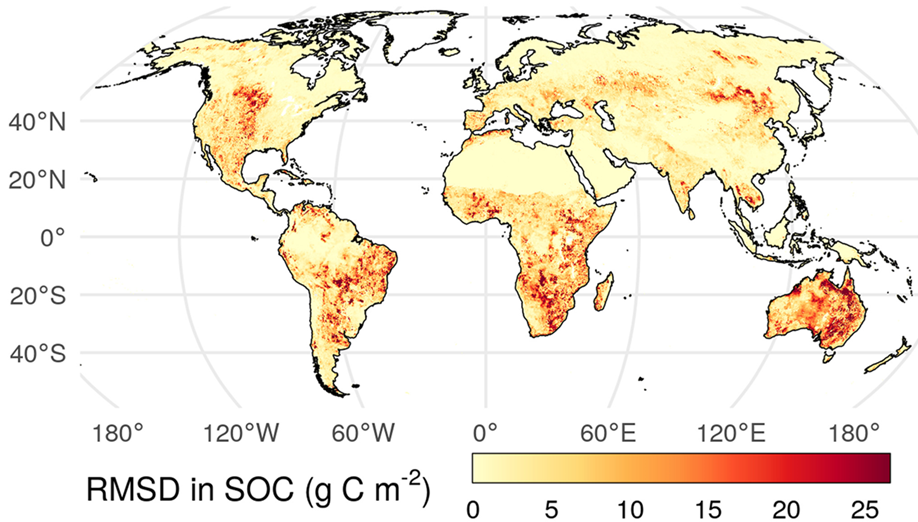Satellite Monitoring of Global Surface Soil Organic Carbon Dynamics Using the SMAP Level 4 Carbon Product
Published March 11, 2021
Soil organic carbon (SOC) is a key soil health and carbon storage metric that is climate sensitive, but capabilities for global monitoring of SOC have been limited. The Soil Moisture Active Passive (SMAP) Level-4 Carbon (L4C) product includes estimates of topsoil (0-5cm) SOC, which are shown to be consistent with soil inventory data and global vegetation models (r≥0.89) but provide better spatial resolution (1-9km) and daily fidelity. SMAP observations have the greatest impact on L4C SOC in semi-arid lands, which encompass ~60% of the global domain.
See this AGU EOS Research Spotlight for more information. https://doi.org/10.1029/2021EO154095

Reference:
Endsley, K. A., J. S. Kimball, R. H. Reichle, and J. D. Watts (2020), Satellite monitoring of global surface soil organic carbon dynamics using the SMAP Level-4 Carbon product, Journal of Geophysical Research - Biogeosciences, 125, e2020JG006100, doi:10.1029/2020JG006100.


